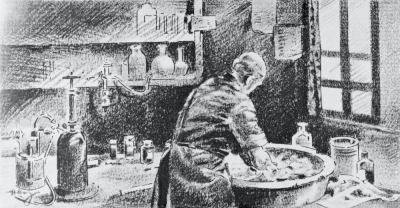
Semmelweis observed that, among women in the first division of the clinic, the death rate from childbed fever was two or three times as high as among those in the second division, although the two divisions were identical with the exception that students were taught in the first and midwives in the second. He put forward the thesis that perhaps the students carried something to the patients they examined during labour. The death of a friend from a wound infection incurred during the examination of a woman who died of puerperal infection and the similarity of the findings in the two cases gave support to his reasoning. He concluded that students who came directly from the dissecting room to the maternity ward carried the infection from mothers who had died of the disease to healthy mothers. He ordered the students to wash their hands in a solution of chlorinated lime before each examination.
Under these procedures, the mortality rates in the first division dropped from 18.27 to 1.27 percent, and in March and August of 1848 no woman died in childbirth in his division. The younger medical men in Vienna recognized the significance of Semmelweis’ discovery and gave him all possible assistance. His superior, on the other hand, was critical—not because he wanted to oppose him but because he failed to understand him.
Semmelweis’ doctrine was subsequently accepted by medical science. His influence on the development of knowledge and control of infection was hailed by Joseph Lister, the father of modern antisepsis: “I think with the greatest admiration of him and his achievement and it fills me with joy that at last he is given the respect due to him.”
Credit : Britannica
Picture Credit : Google




